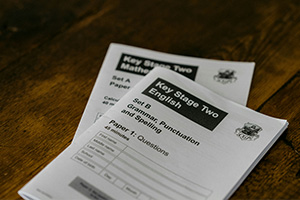ATS Resume Tips for 2025: How to Pass the System and Get the Interview
ATS Resume Tips for 2025: How to Pass the System and Get the Interview
How many times have you applied for a job online and never heard back?
It may not have been your qualifications or experience holding you back.
Chances are, your resume never even made it to human eyes.
That’s because most medium to large companies now use Applicant Tracking Systems (ATS), a software designed to scan, filter, and rank resumes before recruiters even looks at them.
In 2025, ATS has become more sophisticated than ever. Instead of just scanning for keywords, many systems now evaluate formatting, context, and even the way achievements are phrased.
For job seekers like us, this means that a resume needs to do two things at once: pass the technical scan of an ATS and remain engaging to human recruiters.
Striking that balance is the real challenge.
Why ATS Matters More Than Ever in 2025
- Widespread Use: Over 95% of Fortune 500 companies rely on ATS, and adoption is growing among mid-size firms. Even startups are beginning to use affordable ATS software to streamline hiring.
- Increased Competition: A single job posting can attract hundreds of applications. ATS systems quickly cut that pile down, often discarding qualified candidates whose resumes weren’t optimized.
- AI-Powered Scanning: Newer ATS tools use natural language processing (NLP) to identify context. That means they’re better at spotting keyword tricks and penalizing resumes that look “stuffed.”
- Recruiter Efficiency: On average, recruiters spend only 7 to 10 seconds on the first glance of a resume once it passes the ATS. If the document isn’t both technically sound and compelling, the opportunity can slip away.
So, what’s the take away? An ATS-friendly resume isn’t just a trend, it’s a necessity now.
By understanding how these systems work, you can increase your chances of landing interviews and reduce the frustration of sending out applications into a “black hole.”
Common ATS Resume Mistakes Job Seekers Still Make
Even in 2025, thousands of resumes fail before they reach the recruiter’s inbox. But why?
This is because their resumes contain technical errors that confuses ATS software. Here are some of the most frequent mistakes:
1. Overly Fancy Formatting
Resumes that rely on tables, graphics, or decorative templates often look beautiful to the human eye. However, the ATS systems can’t always read them correctly. And when that happens, essential details like job titles or dates might vanish in the scan.
It is important to note that you are not dealing with a human, you are dealing with AI, so you must adapt accordingly.
Here is an example:
✘ Resume with a timeline graphic → ATS misreads dates and assumes missing work history.
✔ Resume with clean text-based layout → All experience sections get parsed correctly.
2. Unrecognizable Headings
ATS systems are programmed to search for standard labels such as Work Experience, Education, Skills, and Certifications. If you replace these with creative versions like “My Journey” or “Learning Adventures”, the ATS may not know how to categorize your information.
Takeaway? Stick to conventional section titles and save creativity for cover letters.
3. Keyword Stuffing or Keyword Gaps
Some candidates overload their resumes with keywords to “game the system,” while others barely use them at all. Both approaches often backfire.
Modern ATS platforms flag unnatural repetition but also penalize resumes that don’t match the job description closely enough.
Here is an example:
✘ “Project management, project management, project management…” (looks fake).
✔ “Led cross-functional project management initiatives, delivering results ahead of schedule.” (looks natural, contextual keyword use).
4. Generic Job Descriptions
Copy-pasting job duties from old contracts or job boards creates bland resumes that blend into the pile. ATS might pick up the keywords, but when a recruiter reviews the file, it won’t stand out.
So what can you do? Turn responsibilities into achievements with numbers. Here is an example:
✘ “Responsible for managing a sales team.”
✔ “Managed a team of 8 sales associates, boosting revenue by 15% in one quarter.”
5. Wrong File Format
It seems minor, but uploading the wrong file format can mean instant rejection. Many ATS systems still struggle with PDFs or scanned images.
Therefore, unless a job ad specifies otherwise, .docx is the safest choice in 2025.
6. Ignoring Customization
Sending the same resume to every application can save time, but you can also lose an opportunity.
ATS software ranks candidates higher when resumes mirror the language of the job posting.
A resume that doesn’t adapt risks being overlooked, no matter how strong the candidate is.
Bottom line: Most resumes fail not because of the candidate’s background, but because of preventable mistakes. Avoiding these pitfalls is the first step toward building an ATS-ready resume that both passes the scan and persuades a recruiter.
Core ATS Resume Tips for 2025
Now that we know what to avoid, let’s look at how to build a resume that works with ATS software and wins over human recruiters.
1. Keep Formatting Simple and Clean
ATS systems thrive on clarity. Stick to standard fonts such as Arial, Calibri, or Times New Roman in size 10 to 12. Avoid text boxes, images, icons, or two-column layouts that may scramble in parsing.
Here is an example:
✘ Before: Name and contact info placed in a Word header → ATS fails to read email and phone number.
✔ After: Contact info in the body of the document, top left → ATS captures it correctly.
2. Use Recognizable Section Headings
Recruiters and ATS alike prefer standard labels. Stick with:
- Summary / Profile
- Work Experience
- Education
- Skills
- Certifications
Takeaway? If you want to add something creative (like “Key Projects”), use it in addition to, not instead of, standard headings.
3. Match Keywords Naturally to Job Descriptions
ATS scanning thrives on keywords, but recruiters can instantly spot unnatural stuffing. The key is to use the same language employers use in job ads, while weaving it into your actual achievements.
Here is an Example:
Job Ad: “Looking for candidates with experience in project management, data analysis, and leadership.”Resume: “Led project management initiatives, including data analysis of market trends, while managing a 10-person team.”
The keywords are there, but they feel organic.
4. Showcase Quantifiable Achievements
Recruiters spend seconds scanning resumes. Numbers and results draw the eye and carry more weight than generic statements.
Before vs After:
✘ “Responsible for improving team performance.”
✔ “Improved team performance by implementing weekly training sessions, increasing productivity by 18+% within six months.”
5. Choose the Right File Format
Unless the posting specifically asks for PDF, stick with .docx. Many ATS tools still misread PDFs, and image-based resumes (like Canva exports) can be unreadable.
Tip: Save multiple versions, i.e. one in .docx for ATS, another in PDF for networking and personal distribution.
6. Tailor Your Resume for Each Job Application
Customization is non-negotiable in 2025. Even subtle tweaks to keywords, skills, or your professional summary can lift your ATS score and improve recruiter engagement.
My-Story: I personally applied to 10 jobs with one generic resume and heard nothing. After tailoring keywords in the summary and skills section, I landed three interviews in four weeks.
7. Use a Strong Professional Summary
Your summary is often the first section recruiters see after ATS parsing. Make it count by combining keywords with a compelling statement of value.
Here is an example:
✘ “Hardworking professional seeking opportunities in IT.”
✔ “Cybersecurity analyst with 5+ years of experience in risk assessment, threat detection, and cloud security solutions. Proven record of reducing system vulnerabilities by 30%.”
Tip: Think of ATS as the “first filter” and recruiters as the “final filter.” Your resume must pass both. I.e you will need a clean structure for the machine and compelling details for the human.
Free ATS Resume Checklist for 2025
Before sending out your next job application, run through this quick checklist to make sure your resume is ready for both ATS scanning and recruiter review:
✔ Formatting & Structure
- Resume saved in .docx format (unless PDF requested).
- Standard font (Arial, Calibri, Times New Roman, 10–12 pt).
- No tables, images, text boxes, or decorative elements.
- Contact info placed in the main body (not in headers/footers).
✔ Headings & Sections
- Uses standard labels: Summary, Work Experience, Education, Skills, Certifications.
- Optional extras: Projects, Publications, Awards (but keep standard headings intact).
✔ Keywords & Language
- Job description keywords added naturally in summary, skills, and experience.
- No keyword stuffing — all phrases fit into real achievements.
- Role-specific keywords (e.g., “Python,” “Agile,” “data analysis”) included.
✔ Work Experience
- Each job listed with job title, company, location, and dates.
- Achievements written in bullet points.
- At least 70% of bullets include numbers, percentages, or outcomes.
- Avoids generic phrases (“team player,” “hard worker”).
✔ Education & Certifications
- Degrees listed in reverse chronological order.
- Certifications spelled out fully (ATS may not recognize acronyms alone).
- Relevant licenses included if required for the role.
✔ Final Review
- Proofread for spelling and consistency.
- Length: ideally 1 page for entry-level, 2 pages for experienced candidates.
- Tailored for the specific job posting (not generic).
Tip: Print this checklist and keep it beside you while tailoring each application. In competitive job markets, even small tweaks can move your resume from the ATS “discard” pile to the recruiter’s “shortlist.”
Frequently Asked Questions About ATS Resumes
1. What is an ATS resume?
An ATS resume is a resume designed to be easily read by Applicant Tracking Systems, the software most employers use to filter candidates. These resumes use clear formatting, standard section headings, and job-specific keywords so the ATS can properly scan and rank them.
2. Do all companies use ATS?
Not all, but most medium and large employers do. In 2025, nearly every Fortune 500 company and a growing number of startups rely on ATS to handle high volumes of applications. Smaller businesses may still review resumes manually, but it’s safest to assume your resume will be scanned.
3. What format is best for ATS resumes?
The safest option is .docx (Microsoft Word) unless the job description specifically requests another format. Some ATS tools struggle with PDFs, and scanned or image-based resumes are almost always rejected.
4. How do I make sure my resume passes ATS?
- Use a clean, text-based format.
- Stick to standard headings like Work Experience and Education.
- Match keywords from the job description naturally.
- Showcase measurable achievements with numbers.
- Avoid graphics, tables, or unusual fonts.
5. Should I use a template for my ATS resume?
Be cautious. Many free or decorative templates online look good to humans but confuse ATS software. If you use a template, make sure it’s designed for ATS compatibility: simple layout, no images or fancy formatting.
6. Can ATS reject my resume even if I’m qualified?
Yes. If your resume doesn’t include the right keywords or has formatting issues, the ATS may not recognize your qualifications. That’s why tailoring your resume for each job posting is essential.
7. How many pages should an ATS resume be?
- Entry-level candidates: 1 page is best.
- Mid-career and senior professionals: 2 pages is acceptable.
Going beyond 2 pages is rarely recommended unless you’re in academia or applying for senior research/technical roles.
8. Do keywords have to match exactly?
Ideally, yes. ATS often looks for exact matches. For example, if the job ad says “project management,” include that exact phrase instead of just “project coordination.” However, natural use in context matters more than repetition.
Final Thoughts
Building a resume in 2025 is all about understanding the systems that stand between you and a recruiter, then presenting your achievements in a way that both technology and humans can appreciate.
By keeping formatting clean, using standard section headings, tailoring keywords to each job posting, and highlighting measurable results, you give yourself the best possible chance of passing through the ATS filter and landing on the recruiter’s shortlist.
The good news is that ATS optimization doesn’t mean sacrificing personality or readability. A well-crafted resume can strike the right balance, i.e. clean and clean enough for software, and compelling enough for people.
If you’re unsure whether your resume meets these standards, it may be worth having an expert set of eyes review it. Sometimes small changes such as adjusting a heading or reframing a bullet point with numbers can dramatically increase interview callbacks.
Ready to Strengthen Your Resume?
At Resume Thrive, our focus is simple: helping candidates create resumes that are ATS-tested, recruiter-approved, and tailored for success.
If you’d like to know how your current resume performs, you can start with a free resume review.
Your skills and experience deserve to be seen. Let’s make sure they don’t get lost in the system.












